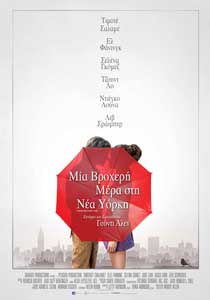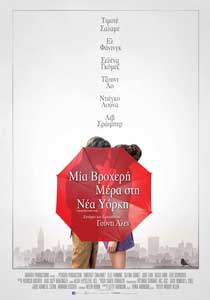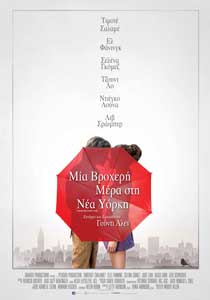Synopsis

Woody Allen’s romantic comedy A RAINY DAY IN NEW YORK tells the story of college sweethearts, Gatsby (Timothée Chalamet) and Ashleigh (Elle Fanning), whose plans for a romantic weekend together in New York City are dashed as quickly as the sunlight turns into showers. The two are soon parted, and each has a series of chance meetings and comical adventures while on their own.
When Ashleigh gets an assignment from the school paper to interview celebrated film director Roland Pollard (Liev Schreiber) in Manhattan, Gatsby seizes the opportunity to show Arizona-bred Ashleigh his favorite haunts in his hometown. An old soul, Gatsby loves vintage New York, and he puts together a jam-packed itinerary of classic haunts like the Bemelman’s Bar at Café Carlyle.
Gatsby’s well-laid plans are quickly sidetracked when Pollard invites Ashleigh to watch a work-in-progress screening of his new film. Ashleigh is soon off on a head-spinning series of encounters that lead her from Pollard to screenwriter Ted Davidoff (Jude Law) to movie star Francisco Vega (Diego Luna).
Left to his own devices in the city, Gatsby ends up spending the day with Chan (Selena Gomez), the sharp-witted younger sister of his ex-girlfriend. He also goes to a party thrown by his wealthy parents, where he has a life-changing conversation with his mother (Cherry Jones).
Over the course of a dreamy and drizzly day in New York, Ashleigh discovers she might not be who she thought she was and Gatsby learns that while you only live once, once is enough if you find the right person.
About the Production
A RAINY DAY IN NEW YORK follows a young couple, Gatsby (Timothée Chalamet) and Ashleigh (Elle Fanning), as their hopes for a romantic weekend in New York City go comically off track.
Gatsby and Ashleigh’s trip is precipitated by an assignment Ashleigh receives from her college newspaper to interview her favorite film director, Roland Pollard (Liev Schreiber), in Manhattan. As a proud New Yorker, Gatsby is eager to usher Ashleigh around his favorite places, as the Arizona-born Ashleigh hasn’t been to the city since she was a child.
Unfortunately, the date of Ashleigh’s interview with Pollard coincides with a party that Gatsby’s mother is giving, something he is determined to miss. Gatsby is at odds with his wealthy parents, in particular his mother (Cherry Jones), for the lofty expectations they have placed on him throughout his life. While they see money as a hallowed token of social status, Gatsby nonchalantly gambles with it. “Gambling isn’t about the money for Gatsby,” says Woody Allen. “He’s got a natural flair for it, and it’s a very seductive, addictive thing. The money is easy come, easy go, so it doesn’t mean anything to him.”
Like his namesake in F. Scott Fitzgerald’s novel, Gatsby is a creature of a bygone era. He prefers classic Hollywood movies, and standards by Gershwin to anything contemporary. “He’s his own person, and he’s only interested in what he’s interested in,” says Allen. “He likes his old music, his old things, and his rainy days. He’s got his own little feelings, and nobody’s going to get him off that.” Even Gatsby’s gambling reflects his state of being out of time: “It has a nostalgic, romantic quality for him,” says Allen. “For him, it has the feeling of New York in a Runyonesque era, with Broadway streets allegedly full of gamblers and horseplayers. That’s all part of Gatsby’s romantic conception of life.”
Ashleigh, like Gatsby, is also born to wealth, but growing up in the Southwest has made her a much more untroubled and carefree person. She doesn’t have the inner conflicts that Gatsby has, and is set on having a career as a journalist. Still, her upbringing in Arizona has definitely made her less worldly than Gatsby. “Ashleigh is a nice small-town girl,” says Allen. “She’s been brought up to ride horses and fish and play golf. She’s intelligent and decent, but she doesn’t have New York street smarts.”
As soon as Gatsby and Ashleigh get to New York, he drops her off at a Soho hotel for her scheduled interview with Roland Pollard. Before Ashleigh is even able to ask a question, Pollard offers her a scoop: he has lost confidence in himself as an artist and is ready to abandon his new film. “Pollard is a perfectionist who is always questioning himself and always thinks his work isn’t good enough,” says Allen. “Artists like him are their own worst critic and are tougher on their work than the public is.” As a sincere appreciator of Pollard’s body of work, Ashleigh urges him not to give up, and assures him that his best work is yet to come. Touched by Ashleigh’s confidence in him, Pollard invites her to a work-in-progress screening of his new film. Honored that Pollard values her opinion and recognizing she has stumbled onto a big story, Ashleigh tells Gatsby she has to break their lunch date. Gatsby is both disappointed as well as suspicious about how familiar Ashleigh has become with Pollard in such a brief amount of time.
Ashleigh’s cancellation of the lunch date marks the moment when Gatsby and Ashleigh’s planned day in New York comes apart; from this moment on, they each spend the rest of the day on their own. Ashleigh’s day leads her on a journey from Pollard and his long-suffering screenwriter Ted Davidoff (Jude Law) to handsome Latin movie star Francisco Vega (Diego Luna).
While visiting a school friend who is making a film in Greenwich Village, Gatsby is persuaded to play a small role. Gatsby is surprised to discover that his role also involves kissing a woman, and that the woman is Chan (Selena Gomez), the younger sister of his ex-girlfriend Amy. Chan, who has a cheeky, take-charge personality, presses Gatsby to inject extra zeal into their kiss, grumbling when he insists on doing it with his mouth closed. In fact, Chan teases Gatsby non-stop about everything. “Chan is a master of the put-down,” says Allen. “She’s sharp and is a good observer of life. Her sarcasm is also her way of flirting.”
Gatsby and Chan spend the day together, going first to her apartment, and later, to the Metropolitan Museum of Art. While at her place, Gatsby sits down at the family piano and sings a 1940s standard, “Everything Happens to Me,” about the unluckiest man in the world. The song might not seem the most obvious choice for Gatsby, who has had so many advantages in his life, but it reveals he is not a happy man. “He’s a loner,” says Allen. “He’s spent his youth sitting in his room playing his records, and didn’t socialize with other kids. He doesn’t fit into the cookie-cutter mold his mother wants for him, because he doesn’t buy into her values. He’s definitely a sad kid, there’s no question about it.” Chan is charmed by Gatsby’s rendition of the song, and they talk about their mutual affection for classic romantic Hollywood movies.
Meanwhile, Ashleigh is at the work-in-progress screening of Roland Pollard’s film and it is not going well. Pollard becomes so utterly discouraged that he leaves the screening, saying he needs to be alone and think. Ashleigh, who loves what she has seen of the film so far, decides to stay on and watch the remaining minutes with screenwriter Davidoff. Afterwards, she heads off in Davidoff’s car to search for Pollard. On the way, Ted happens to discover that his wife, Connie (Rebecca Hall) is having an affair. As Ted wants to continue his conversation with Connie alone, he puts Ashleigh in a cab to a film studio to find Pollard.
As Ashleigh honestly admires Pollard and Davidoff and their work, she becomes a comforting anchor during their crises. “Ashleigh is unspoiled by the cynicism and the lies of life and she’s on their side,” says Allen. “In her sincere way, she’s inspirational for them. She knows their work and has a great respect for it. There’s nothing duplicitous about her. Her positive appraisal of their film is open-hearted, and her kind of forthrightness is something they need at the moment and it makes them feel good.”
Back at the museum, Chan reveals to Gatsby that she has always had a crush on him, and is upset that he never seemed to notice her when he came over to see her sister Amy. The things that Amy found a little odd about Gatsby were things Chan liked the best, like when Gatsby took Amy to Central Park in the rain. “Chan found that kind of thing romantic, because she’s got that streak in her,” says Allen. “The most sentimental people always go out of their way to disguise it and act cynically, but they are really very sentimental people when you scratch the surface.”
While looking for Pollard at the movie studio, Ashleigh encounters Francisco Vega (Diego Luna), a womanizing movie actor who sees Ashleigh’s sweetness as an invitation for conquest. “To Vega, Ashleigh is just a pretty blonde girl,” says Allen. “He is the kind of guy who tries to flirt with whoever he can.” Flattered by the attention from a handsome celebrity, Ashleigh becomes flustered, and backs away from identifying Gatsby as her boyfriend. “She’s under awkward social pressure,” says Allen. “She’s trying to navigate the waters of not putting Gatsby down, but explaining, ‘yes, he’s kind of a boyfriend, he’s nice and all that, but he’s boyish.’ She’s just tap-dancing her way through being with Vega because she’s over-matched.”
While at an exhibit of an Egyptian tomb at the museum, Gatsby is spotted by his aunt and uncle, and he realizes he will have to attend his parents’ party after all. After seeing Ashleigh on the hotel TV with Vega, he becomes convinced Ashleigh has left him, and now has to come up with an excuse for attending the party without her. His solution does not go over well, leading to a heart-to-heart meeting with his mother.
The characters in A RAINY DAY IN NEW YORK all have issues that revolve around their identity. Gatsby has the most obvious complex—he hasn’t yet figured out who he is. Gatsby’s mother (Cherry Jones) is ultimately revealed to be a completely different person from who he had previously thought her to be. We are repeatedly reminded of Ashleigh’s unformed identity: when she meets Vega, she is so flustered by his fame that she can’t remember her own name, and twice in the film she holds up her driver’s license as a means of identifying herself. Screenwriter Davidoff lives in the shadow of director Pollard, always once removed from the auteur’s acclaim. Pollard, in turn, has lost touch with the artist he once was. Finally, Vega struggles as an actor with being typecast.
Closely linked to this recurring motif of identity is the yearning that the characters have to be seen. Gatsby wants his mother to truly see and accept him as he is; Chan was hurt that Gatsby never noticed her when he was around her sister; Vega is first seen wearing a mask, and Ashleigh doesn’t recognize him until he takes it off; and Gatsby’s mother decides the time has finally come to let Gatsby see her as she is. “The characters have a need for people to look though their physical exteriors to who they are inside,” says Allen. “This is a common thing in life. You have a crush on somebody and they don’t see you. Of course, they see you visually, but you don’t register in an impacting way on their life.”
In keeping with characters who struggle to be recognized for who they really are, the visual style of the film often obscures the characters faces, often in shadow. One example is when the car window on the film location shows a reflection of what is outside the car rather than Gatsby and Chan inside the car. “Cinema is not about showing everything very clearly all the time,” says cinematographer Vittorio Storaro, who previously teamed with Allen on CAFÉ SOCIETY and WONDER WHEEL. “Most of the time, it can be more appropriate for the characters to be behind something or only visible in part. You need to create some different moments as a way of keeping the interest of the audience.”
Storaro used different kinds of light and camera movement to emphasize the differences between Gatsby and Ashleigh’s personalities. “Gatsby loves New York with clouds in the sky, or even better if there’s a little rain,” says Storaro. “Ashleigh is bright and passionate, so I used warmer colors with her. Even when Gatsby and Ashleigh are together, Storaro found variations. “It doesn’t rain the entire day, in the same way,” says Storaro. “Sometimes the wind moves the clouds and the sun comes out, and later, the sun goes away again. I took advantage of those kinds of chance happenings. When Gatsby, under the clouds he loves, calls Ashleigh, I had a warm beam of light come out where she was.” Storaro also used the Steadicam for moving shots with Ashleigh, and a still camera for Gatsby. “We used the Steadicam to underline the kind of freedom Ashleigh needed to have in movement,” he says. “She is more free-minded and open to everything, but Gatsby is trying to keep things much more simple around himself.”
Like New York City, the rain is a pivotal character in the movie. “We wanted rain to be a symbol of romance and love in the picture,” says Allen. “New York is very beautiful on those gray, foggy, or rainy days. There’s something about the soft lighting and the streets getting washed clean.” The rain also suggests the different ways that Gatsby and Ashleigh see life. “Ashleigh sees the rain as gloomy, while Gatsby sees it as romantic,” says Allen.
The locations that Gatsby and Ashleigh visit also indicate the contrasts in their personalities as well as the experiences they have during their time in New York City. “Gatsby is in love with old-time New York,” says production designer Santo Loquasto. “So we see him in the Village and old hotels, and in places that are throwbacks to a bygone era, like Bemelman’s Bar in the Carlyle Hotel. But Ashleigh is falling in love with a more contemporary New York that offers the hip glamour of a Soho hotel and a downtown loft. Her world is much bolder and it’s about space and beautiful contemporary furniture.” The fictional Wooster Hotel, where Ashleigh goes to interview director Roland Pollard, was shot at The Bowery Hotel in the East Village. As the filmmakers couldn’t interrupt the comings and goings of the hotel guests, Loquasto and his team built a hotel facade on a different street, and created their own lobby in the floor directly above the real one. “I used their furniture, and I made it more like their lobby,” he says. “We also used a lot of Oriental carpets and Orientalist knockoff paintings that we hung everywhere. We wanted to have a kind of 19th century hip look. Pollard’s hotel suite/office was shot in a private loft apartment. “It was staggering when you went into it,” says Loquasto. “It made for a fantastic, slightly fantasized hotel suite that a filmmaker might rent.” Chan’s classic Upper East Side home was filmed in an apartment on Central Park West. “The family that owned it had a son and a daughter,” says Loquasto. “The daughter who lived there was perfect in her own sensibility for Chan. We had to bring in some specific things, like sketches, watercolors and some books, but otherwise it was just a matter of capturing what was already there.”
Costume designer Suzy Benzinger didn’t have a hard time finding clothes for Gatsby. “It was Ralph Lauren off the rack,” she says. “It’s kind of a uniform for a certain kind of preppy kid who doesn’t care so much about clothes. Gatsby isn’t a fashion kid. He’s an old soul and he dresses himself in an outfit he could have bought a long time ago. The Herringbone jacket he wears is something that Ralph Lauren has made for years.” Ashleigh, however, shows up at Pollard’s office in a pink pastel cashmere sweater, dressing to impress. “Ashleigh is there on a mission,” says Benzinger. “She wants to present herself as a together girl who wants a career so that Pollard will take her seriously, so she really puts on the dog for the interview.” Chan, on the other hand, is a much more self-assured character who dresses in a bolder way. “She’s one of those New York girls who throw ridiculously expensive clothes on in an offhand way,” says Benzinger. “They may look like teenage girl’s clothes anywhere, but she’s wearing six hundred dollar sneakers and a thousand dollar sweater. The burgundy Stutterheim raincoat she wears was the hot raincoat of that year. It was nearly impossible for us to get, particularly because we needed multiple copies for filming.”
A RAINY DAY IN NEW YORK is Woody Allen’s rendition of an old-fashioned Hollywood romance. “I’ve always loved those movies,” he says. “I find them to be so wonderful. This is a love story, and I was excited by the idea of setting against a romantic portrait of New York in the rain.” A RAINY DAY IN NEW YORK is much more optimistic than most of the films that Allen has made. “I do think it’s positive,” says Allen. “I think that Gatsby has found himself over the weekend. He has a better relationship with his mother, and he’s come to a conclusion about the woman in his life.”
Gatsby and Ashley come to New York on a Saturday morning with plans to leave the next morning. As Gatsby has scheduled everything down to the minute, we are always aware of what time it is and how it is slipping out of his control. Time is a major theme in the film and it isn’t coincidental that a clock figures prominently in the story. “Gatsby has everything planned out so it will be a delightful weekend with Ashleigh, but it doesn’t work that way,” says Allen. “As Gatsby says, ‘the city has its own agenda.’ Time is always against you. You can try to manage it, or manipulate it a little bit, but in the end, you can’t. From the moment the characters kiss under the clock at the end, time starts to move their relationship forward, and that relationship may last a year, two, ten, twenty, or a lifetime. But it will proceed in time as everything does.”
Cast
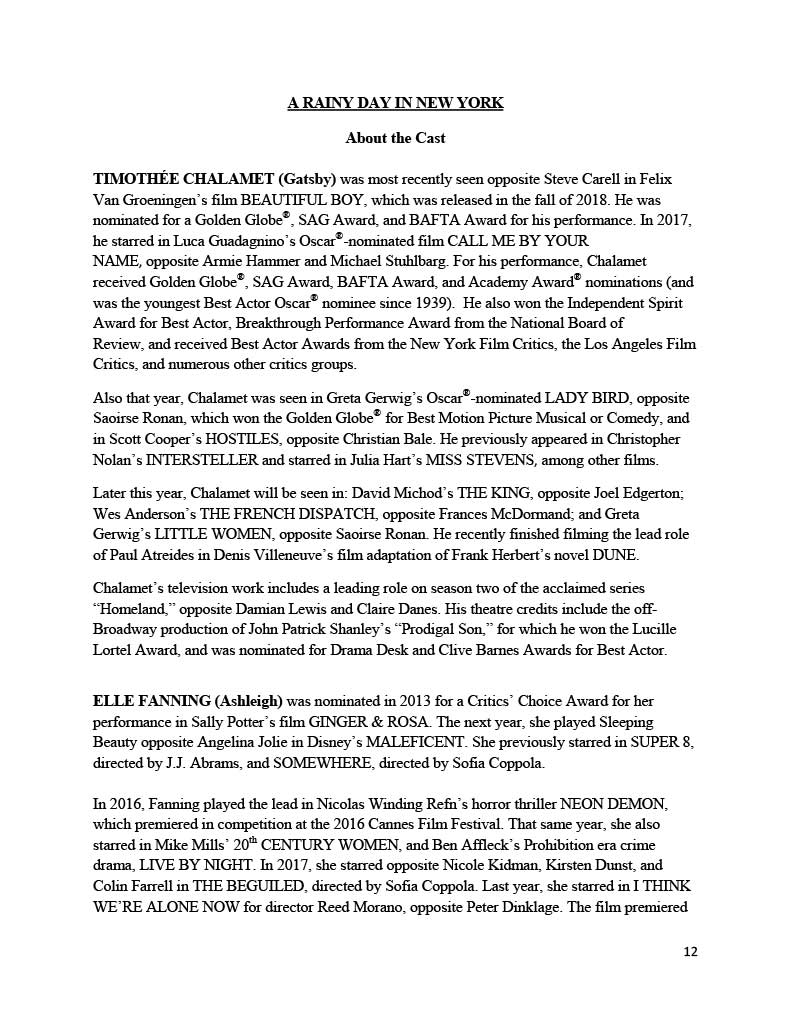
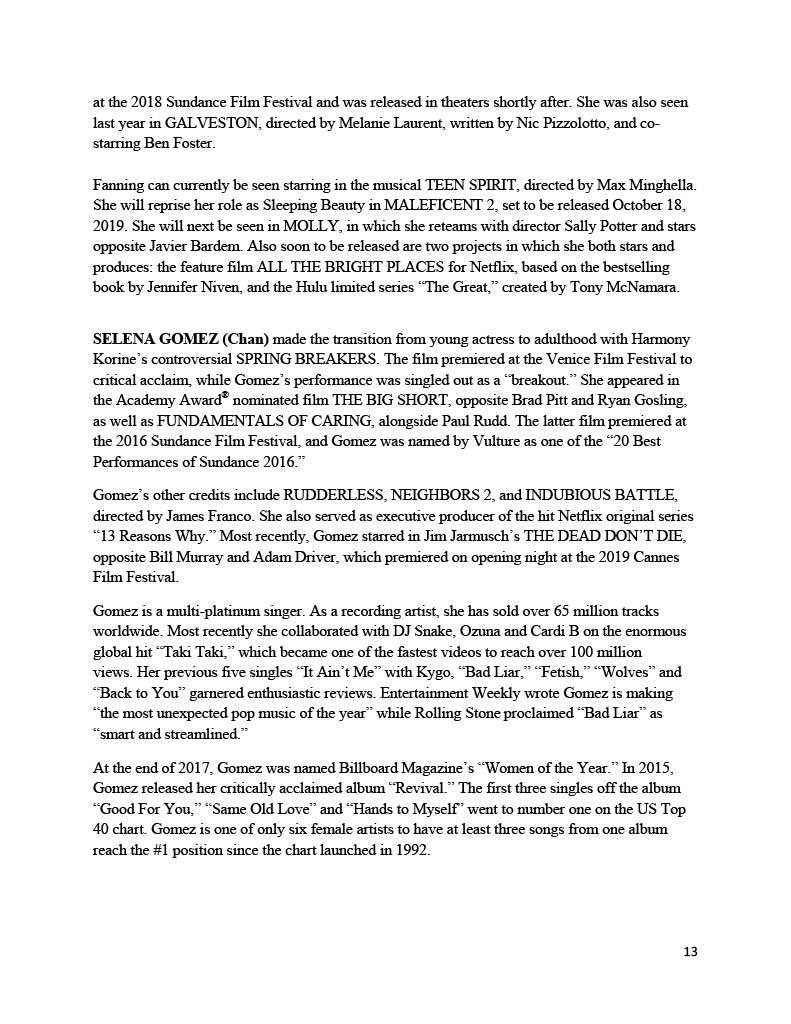
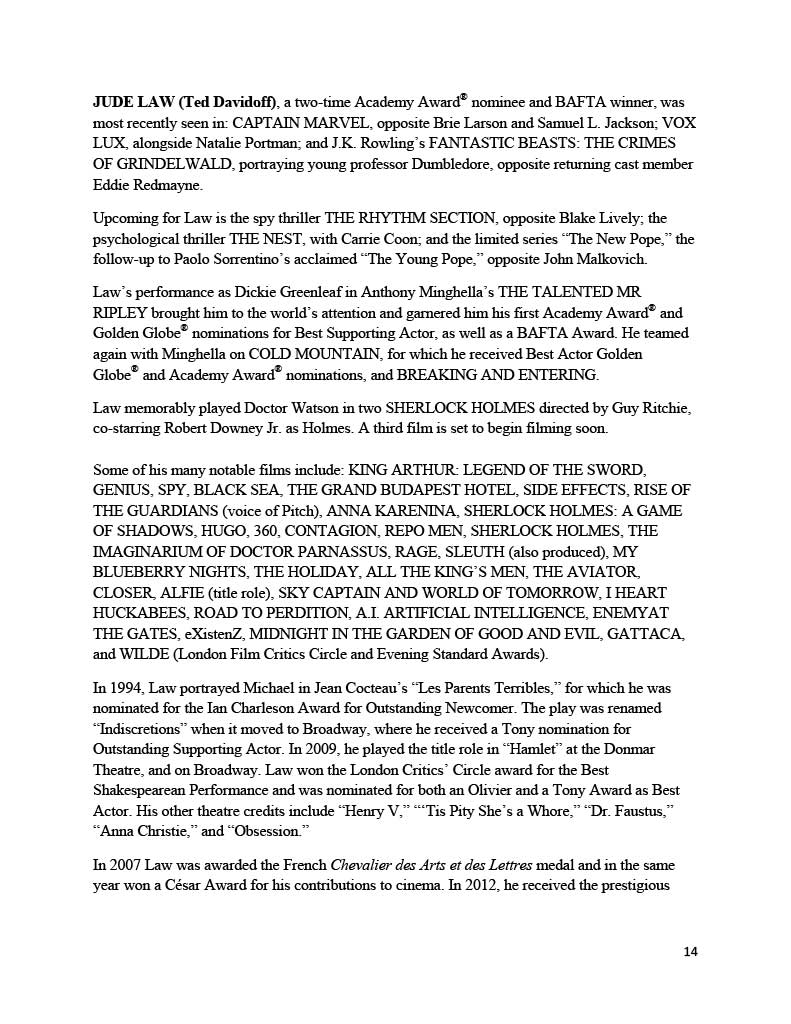
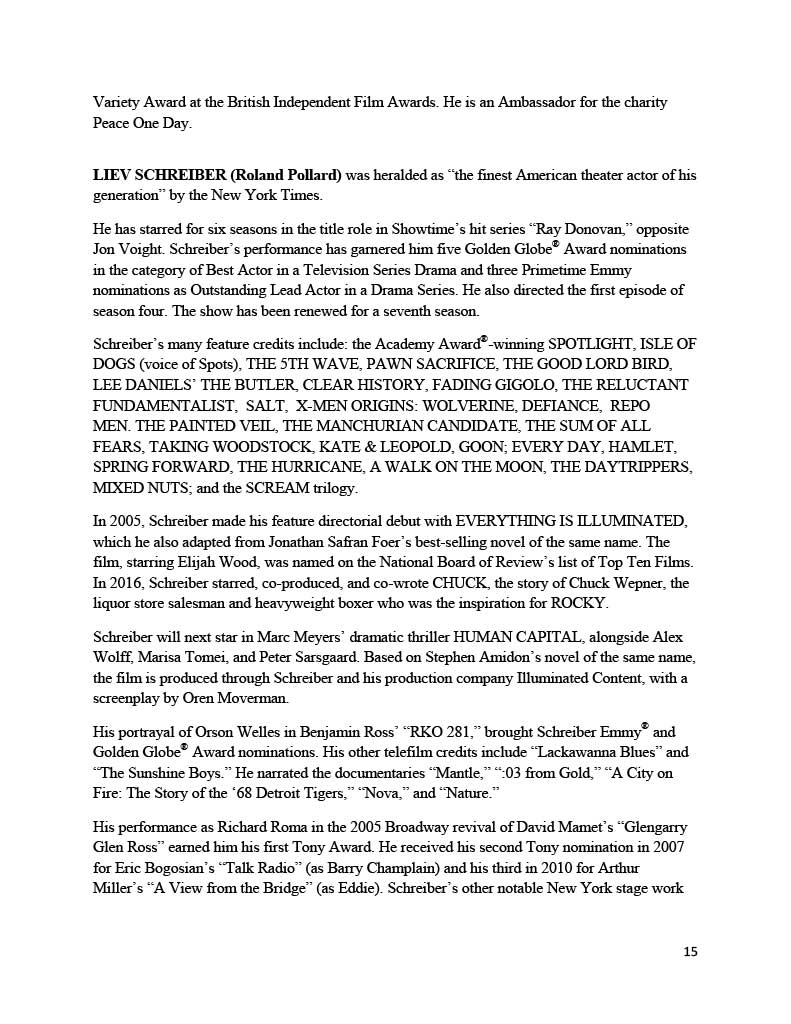
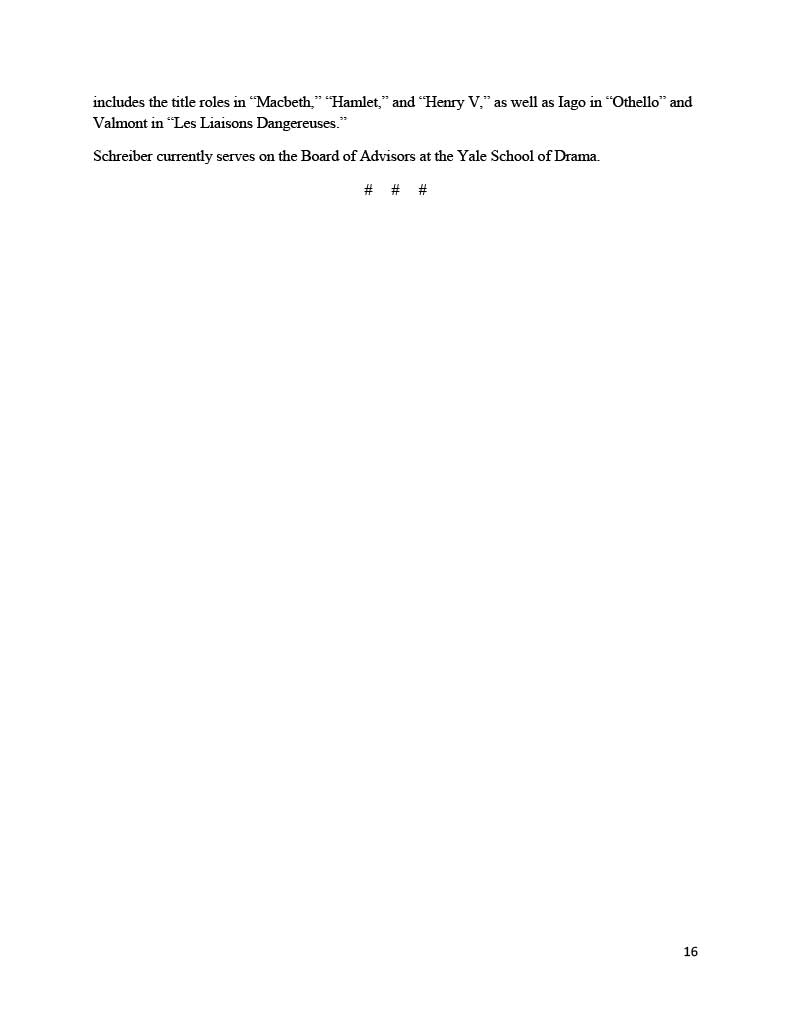
Gallery

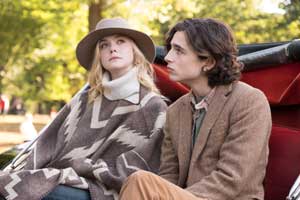

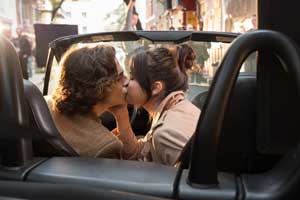
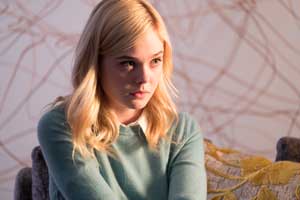
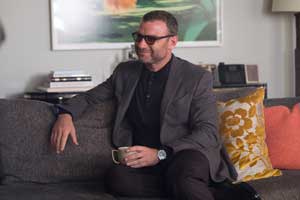
Trailer
International Artwork
